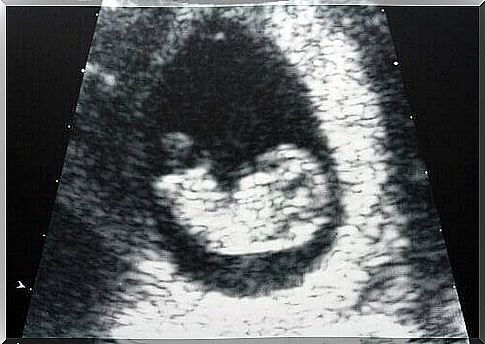Do You Know What Bleeding Between Periods Means?

Bleeding from the vagina or various kinds of spotting occurring between consecutive menstrual periods in medicine carries the generic title of ” bleeding between periods.” It is usually taken as a warning sign for the woman who develops it. It should not be ignored.
This is because it may be one of the symptoms of a more serious problem with the functioning of the female reproductive system.
This is not considered completely normal. However, it is also not unusual, as it does not always indicate the possibility of dangerous health complications.
Therefore, it is extremely important to have sufficiently comprehensive knowledge about this problem and its possible causes. Especially before you start drawing hasty, often extreme conclusions.
Bleeding between menstruation – basic information
The length of the normal menstrual cycle usually ranges from 21 to 35 days, averaging 28 days. Standard menstrual bleeding lasts two to seven days. As a result, it gives a total blood loss of 30 to 80 ml. This is perfectly normal.
Breakthrough bleeding occurs when there is a little vaginal blood loss between the last day of your menstrual cycle and before the next period begins.

However, this is a phenomenon that practically all women of childbearing age experience at least once in their lifetime. It can take the form of both marked bleeding and slight spotting. In most cases, it is nothing to be concerned about.
However, if you experience this symptom, health specialists and gynecologists recommend consulting a doctor. It may also indicate the presence of more serious health problems, such as cancer or other disorders with pre- or early neoplastic characteristics.
What could be causing spotting between periods?
Ovulation
Ovulation is known to be one of the primary causes of abnormal vaginal blood loss between periods. During ovulation, a woman’s body increases the production of estrogen, a hormone that is directly related to the release of an egg from the ovary.

This sharp rise in estrogen levels in the body can cause spotting between periods. So if you notice that you are bleeding between days 13 and 16 of your menstrual cycle, the most likely cause is a change in your estrogen levels. There is nothing wrong or disturbing about it. Do not worry.
Usually, the color of blood can vary from pink to brown in these cases. Sometimes it is accompanied by white mucus from the cervix and the occurrence of cramps in the lower abdomen.
Stress
Physical and mental stress may be directly related to the occurrence of various types of disorders of the menstrual cycle. It can also include breakthrough bleeding.
Prolonged periods of tension and stress trigger specific reactions in the brain. They can alter your normal menstrual cycle, thereby causing the characteristic brown bleeding. This usually happens a few days before or after the standard period of menstruation.
Previously undetected pregnancy
Breakthrough bleeding is not uncommon for a woman who is unaware that she has become pregnant. Usually this information is obtained during a visit to the gynecologist with which she went to the doctor to discover the cause of the unusual spotting.

Various types of bleeding may occur during the first few weeks of pregnancy due to the process of implantation of the embryo in the womb. But it’s also important to consult your doctor at this point, as this could also mean a miscarriage.
When is breakthrough bleeding dangerous?
If your intermenstrual bleeding is heavier than your normal period, or is intense red, black or brown in color and accompanied by other symptoms such as excessive sweating, dizziness, heart rhythm disturbances or abdominal pain, you should seek medical attention immediately .
Are you losing a lot of blood as a result of this phenomenon? This could mean that you have uterine fibroids. This symptom should not be underestimated.
However, in any case, profuse vaginal blood flow between periods should be carefully examined by a specialist – gynecologist, which will allow you to determine whether the cause is in the cervix, the uterus itself or the vagina.
What can postmenopausal bleeding mean?
The end of a woman’s regular period is a signal that her body has reached the menopausal stage. But after a period of time without a regular period, some women may notice different types of spotting or even loss of blood, which can also be a warning sign of certain health problems.
These types of symptoms can be caused by uterine fibroids or polyps. In most cases, however, they are a signal encompassing more important health problems. It could be cancer or other disorders that precede the development of tumors.
What research should be done?
Pap smear is one of the most common procedures for detecting gynecological disorders. Its results are used to assess whether the bleeding is from the uterus, and if not, whether there are cancerous cells in it.
Another commonly used test is ultrasound, which is a very sensitive diagnostic test that allows to detect possible changes in the structure of the uterus and ovaries.
However, if their results prove insufficient to make a clear diagnosis, any additional doubts can be dispelled by hysteroscopy, which is the final diagnostic test and involves the insertion of a small camera into the uterus through the vagina. It allows for a much more detailed analysis of its current condition and condition.









